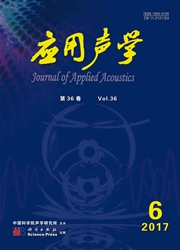

 中文摘要:
中文摘要:
超声衍射时差法(Ultrasonic TOFD)通过接收衍射波信号对缺陷进行测深定高,分析超声波在检测对象中的传播对于提高检测效力具有重要作用。本研究采用有限元方法模拟超声TOFD检测过程,探讨了缺陷衍射波的产生及传播特性,并通过试验对模型结果进行了验证。研究表明:有限元建模能够直观显示超声TOFD检测的声波传播过程,模拟结果与试验具有较好的一致性;实际检测过程中涉及的要素,如:探头优化布置、衍射波传播方式、幅度分布、缺陷端部形状对衍射过程的影响均能较好地体现在仿真模型中;超声TOFD检测的有限元模型可实现检测过程可视化,并可为工程检测人员提供一种新的检测方案设计和结果分析的手段。
 英文摘要:
英文摘要:
Ultrasonic time-of-flight diffraction testing (Ultrasonic TOFD) is used for testing defects through receiving the signal of diffraction wave, so analyzing of diffraction wave propagation in testing subject is beneficial for enhancing testing capability. In the paper, the finite element method (FEM) is adopted to simulate the course of ultrasonic TOFD testing, and the simulation results are demonstrated by experiments. The research results indicate that the characteristics of wave propagation which present in the FEM modal are concordance with the practical situation, and the key factors such as probe arrangement, wave transmission, amplitude distribution, and influence of defect's tip shape are included in the model. After all, the visualization of ultrasonic-TOFD course is implemented by FEM, which can play an important role in real testing course for testing method optimization and result explanation.
 同期刊论文项目
同期刊论文项目
 同项目期刊论文
同项目期刊论文
 期刊信息
期刊信息
